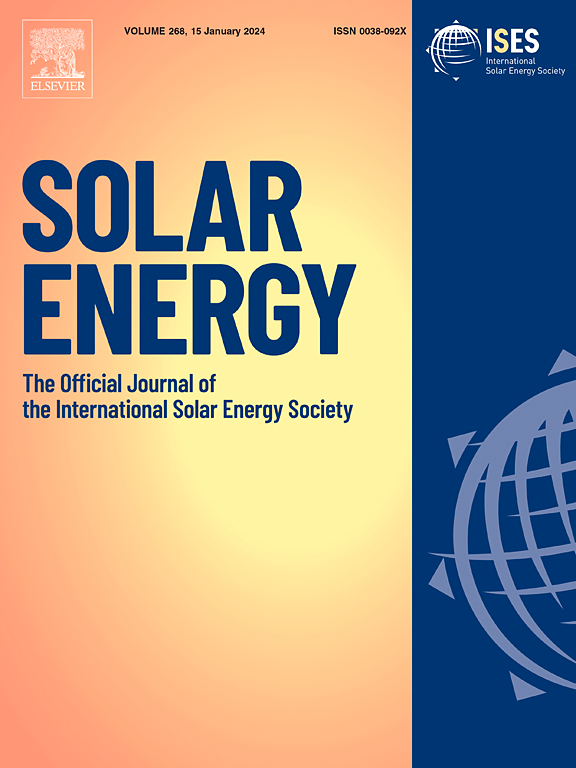Multiscale analysis on opto-electrical conversion of thermophotovoltaic cell with doping- and temperature-dependent properties
IF 6
2区 工程技术
Q2 ENERGY & FUELS
引用次数: 0
Abstract
Thermophotovoltaic (TPV) cells offer a novel approach to enhancing sustainable energy applications, both in terms of thermal energy storage extraction and high-temperature heat recovery. Focusing on radiation-to-electric conversion, a coupled carrier dynamics model is employed to analyze the effects of doping- and temperature-dependent properties on the multiscale performance of GaSb TPV systems. First, the effects of changed bandgap, absorption coefficient, and carrier mobility on cell performances are assessed under varying doping levels and temperatures. The effect of carrier mobility counteracts that of the bandgap and absorption coefficient. Ignoring doping dependence results in an overestimation of output power, while disregarding temperature dependence leads to an opposite outcome. Additionally, system performance is evaluated as various parameters change, such as emitter and cell characteristics. Influences of condition-dependent properties are discussed, showing that as emitter temperature increases, both cell and system efficiencies are significantly affected (33.05% and 17.57%, respectively), with a maximum discrepancy of 8%. The impact of these properties can reach up to 29% with changes in emitter emissivity, and the optimized bandwidth of ideal spectral selectivity decreases by 50 nm. When considering condition-dependent properties, system efficiency becomes more sensitive than cell efficiency to emitter characteristics. Furthermore, peaks in efficiency of 39.2% and 40.6% are observed with variations in cell thickness and doping concentration.
具有掺杂和温度相关特性的热光电池光电转换多尺度分析
热光电(TPV)电池在热能存储提取和高温热回收方面为提高可持续能源应用提供了一种新方法。以辐射到电的转换为重点,我们采用了一个耦合载流子动力学模型来分析掺杂和温度相关特性对 GaSb 冠捷系统多尺度性能的影响。首先,评估了在不同掺杂水平和温度下,带隙、吸收系数和载流子迁移率的变化对电池性能的影响。载流子迁移率的影响抵消了带隙和吸收系数的影响。忽略掺杂相关性会导致高估输出功率,而忽略温度相关性则会导致相反的结果。此外,在发射器和电池特性等各种参数发生变化时,也会对系统性能进行评估。讨论显示,随着发射器温度的升高,电池和系统效率都会受到显著影响(分别为 33.05% 和 17.57%),最大差异为 8%。随着发射极发射率的变化,这些特性的影响可达 29%,理想光谱选择性的优化带宽减少了 50 纳米。考虑到与条件相关的特性,系统效率比电池效率对发射器特性更加敏感。此外,随着电池厚度和掺杂浓度的变化,可观察到 39.2% 和 40.6% 的效率峰值。
本文章由计算机程序翻译,如有差异,请以英文原文为准。
求助全文
约1分钟内获得全文
求助全文
来源期刊

Solar Energy
工程技术-能源与燃料
CiteScore
13.90
自引率
9.00%
发文量
0
审稿时长
47 days
期刊介绍:
Solar Energy welcomes manuscripts presenting information not previously published in journals on any aspect of solar energy research, development, application, measurement or policy. The term "solar energy" in this context includes the indirect uses such as wind energy and biomass
 求助内容:
求助内容: 应助结果提醒方式:
应助结果提醒方式:


